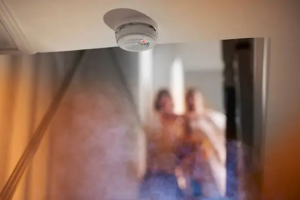When it comes to tackling electrical projects at home, having the right wiring materials list can make all the difference between a smooth, successful installation and a frustrating mess. Whether you’re a DIY enthusiast or just curious about what it takes to wire up your space, this guide will walk you through all the materials you’ll need, why they matter, and how to use them safely. Let’s dive in!

Why Do You Need a Wiring Materials List?
Table of Contents
If you’ve ever started a project without a checklist, you know the chaos that can unfold. Having a wiring materials list ensures you have everything you need at your fingertips before you even begin. This reduces trips to the hardware store, saves time, and helps you stay organized while keeping safety front and center.
The Complete Wiring Materials List
Here is a detailed rundown of all the wiring materials you might need for your project, whether it’s a simple repair or a full-blown rewiring job.
1. Electrical Wires and Cables
Electrical wires are the foundation of any wiring project. They come in various types, such as:
- Single-core wires: Ideal for general-purpose use and easier to maneuver.
- Multi-core cables: Suitable for heavier electrical loads.
- Armoured cables: Used for underground wiring to protect against damage.
Make sure you select the appropriate type based on the power requirements and location of the installation.
2. Conduits and Trunking
Conduits help protect electrical wires and make your installation look neat and organized. They come in different materials:
- PVC Conduits: Flexible, lightweight, and easy to install, ideal for residential projects.
- Metal Conduits: Stronger and more durable, often used in commercial or industrial settings.
Trunking, on the other hand, helps in hiding cables along walls, making your work look clean while providing protection.
3. Electrical Boxes
- Junction Boxes: Connect wires and protect electrical connections. Essential for ensuring safety and easy maintenance.
- Switch Boxes: House your light switches and sockets, keeping your installation tidy.
4. Switches and Sockets
- Standard Switches: These control lighting fixtures or other devices.
- Dimmer Switches: Allow for light adjustment to set the mood.
- Power Outlets (Sockets): Standard outlets or specialized ones (like USB sockets) to plug in your devices.
5. Circuit Breakers and Fuses
Safety is critical in electrical projects. Circuit breakers prevent overloading and short circuits, while fuses cut off power to prevent damage. It’s crucial to have properly rated circuit breakers and fuses for each circuit.
6. Electrical Tape
Electrical tape is a must-have for insulating and protecting electrical connections. It helps keep live wires covered and reduces the risk of short circuits.
7. Cable Connectors
- Wire Nuts: Twist-on connectors that secure and insulate wires.
- Crimp Connectors: Used for stronger, more permanent connections.
These connectors are critical to ensuring that all your connections are safe, secure, and insulated.
8. Cable Clips and Ties
Cable clips and ties are often overlooked but are essential for keeping your wiring tidy. Using them ensures that your cables are securely fixed in place, preventing any loose wires that could become a tripping hazard or get damaged.
9. Electrical Tools
- Wire Strippers: For stripping the insulation from electrical wires without damaging them.
- Screwdrivers: Needed to secure switches, outlets, and connectors.
- Pliers: Useful for holding, bending, and manipulating wires during installations.
- Multimeter: Essential for testing voltage, current, and resistance to ensure that everything is working correctly and safely.
Tips for Using Your Wiring Materials List Effectively
1. Plan Ahead
Before starting any electrical work, map out where you need to install sockets, switches, and lights. This will help you determine the lengths of wire and number of fittings you’ll need.
2. Always Prioritize Safety
Electricity can be dangerous if not handled properly. Always turn off the main power before starting work, and use insulated tools. When in doubt, consult a licensed electrician.
3. Choose Quality Materials
Never compromise on quality when it comes to wiring materials. It’s always better to spend a little more upfront than to deal with the consequences of using low-quality, unreliable parts.
Common FAQs About Wiring Materials
1. What is the difference between a fuse and a circuit breaker?
A fuse is a one-time protective device that melts when excessive current flows through it, breaking the circuit. A circuit breaker, on the other hand, can be reset and used multiple times, offering more convenience and long-term value.
2. Can I do wiring work myself?
If it’s a simple job, such as replacing a socket or light switch, you might be able to do it yourself. However, for complex projects like rewiring a room, it’s always safer to call a licensed electrician.
3. How do I choose the right wire size?
Wire sizes are chosen based on the current that will flow through the wire. Larger appliances require thicker wires. Always check your local building codes to determine the appropriate size.
4. Why is grounding important?
Grounding helps to direct any stray electricity safely into the earth, reducing the risk of electric shock. It’s a crucial part of any electrical system to protect both appliances and individuals.
5. What are the best materials for conduits?
PVC is generally best for residential projects as it’s easy to handle and inexpensive. Metal conduits are better for commercial environments where additional durability is needed.
Wrapping Up
Having a detailed wiring materials list can transform your DIY electrical projects from daunting to manageable. With the right tools and materials, you can confidently complete small installations and repairs. Remember, safety always comes first, so if you’re unsure about any aspect of your project, reach out to a professional.
Using this comprehensive guide, you can now gather everything you need to make your next wiring job a breeze. Happy wiring!



